Sharing Teaching Materials from Canvas
If you’re like me, you’ve put a great deal of time and energy into your Canvas course pages. From building the modules and creating assignments to providing feedback, sending announcements, and making updates to the course schedule, a great deal of our teaching is visible here. When I sign into my course at the end of the semester, I’m proud to see all that my students and I have accomplished together.
Yet, to the great frustration of many of us, it has been exceedingly difficult to get this material out of Canvas to share with others. This has been a problem in two scenarios: when instructors are asked to submit syllabi they have built inside Canvas, and when they are asked to share evidence of teaching effectiveness (whether in job applications, annual evaluations, or award materials).
I understand why the student information inside our course sites should be protected, and the “observer” category is useful if someone is willing to join your course and do their own investigation. But in the scenarios above, instructors are asked to provide information outside the Canvas ecosystem, and there has not been an easy way to do this.
When it comes to sharing our syllabi with our departments each semester, we have historically had two options. Build a syllabus in a word processor and attach it to the Canvas page, or build the syllabus in a word processor and then recreate the substance of the syllabus in Canvas via modules and assignments. Given the benefits of the latter for students, I know there are many of us building duplicate copies of our syllabi every semester. And when it comes time to curate evidence of teaching effectiveness, the best we’ve been able to recommend is copying HTML text or taking screenshots of your modules.
All of these “solutions” seemed needlessly onerous and not particularly effective. I never understood why Canvas didn’t make this a priority, and kept asking around to see if I was missing something.
I came back to this question again this week and took another look. And it turns out I was missing something. Or perhaps a new capability has been developed since I last checked. Either way, I’m pleased to report that it is now possible to export a large portion of your Canvas course (modules, assignments, announcements, etc.) into an ePub and associated files that can be shared with others. And if you’re willing to download an additional piece of open-source software, you can turn that ePub into editable Word documents, PDFs, or HTML code. In this post, I will walk you through the steps.
Step 1: Enable ePub Exporting
Navigate to the individual settings of an active course.*
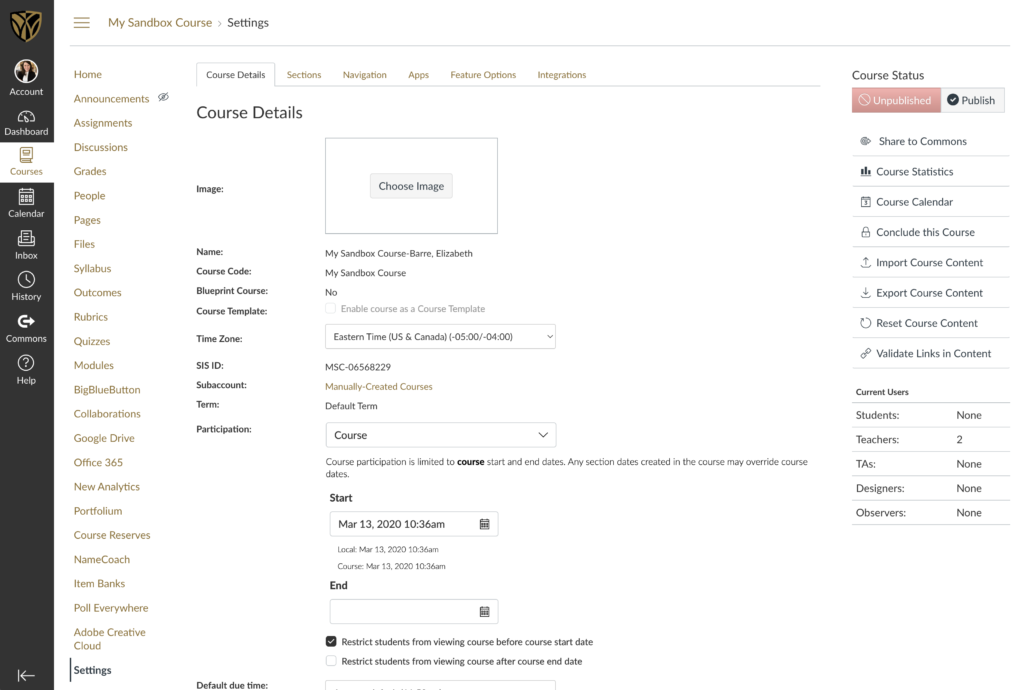
Select the “Feature Options” tab, and toggle “Enabled” next to “ePub Exporting.”
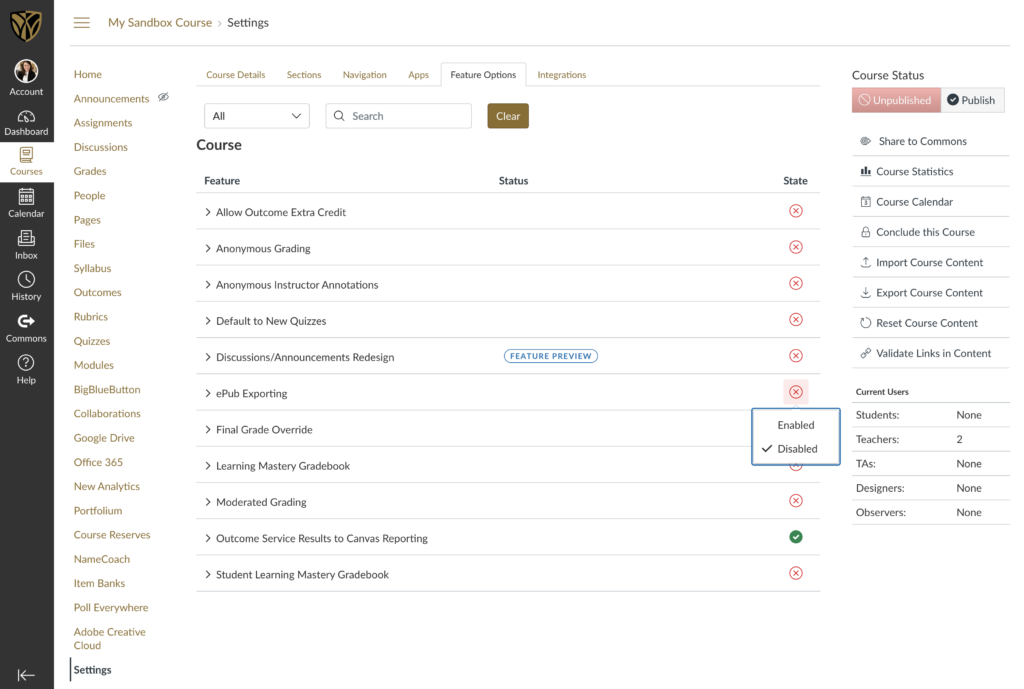
*You can only enable this feature in active courses. You can submit a ticket to IS to activate old courses for this purpose.
Step 2: Download Course Content
Navigate to your Canvas account by clicking on your image in the lefthand menu, under the shield. Select settings from the account menu.
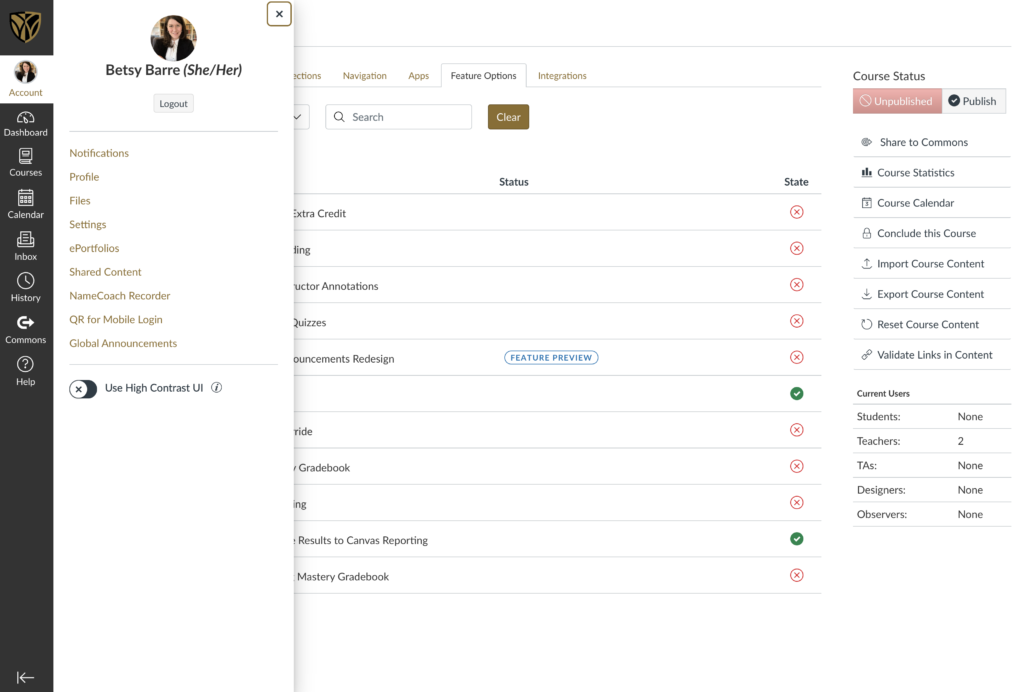
Click the “Download Course Content” button on the right side of the settings screen.
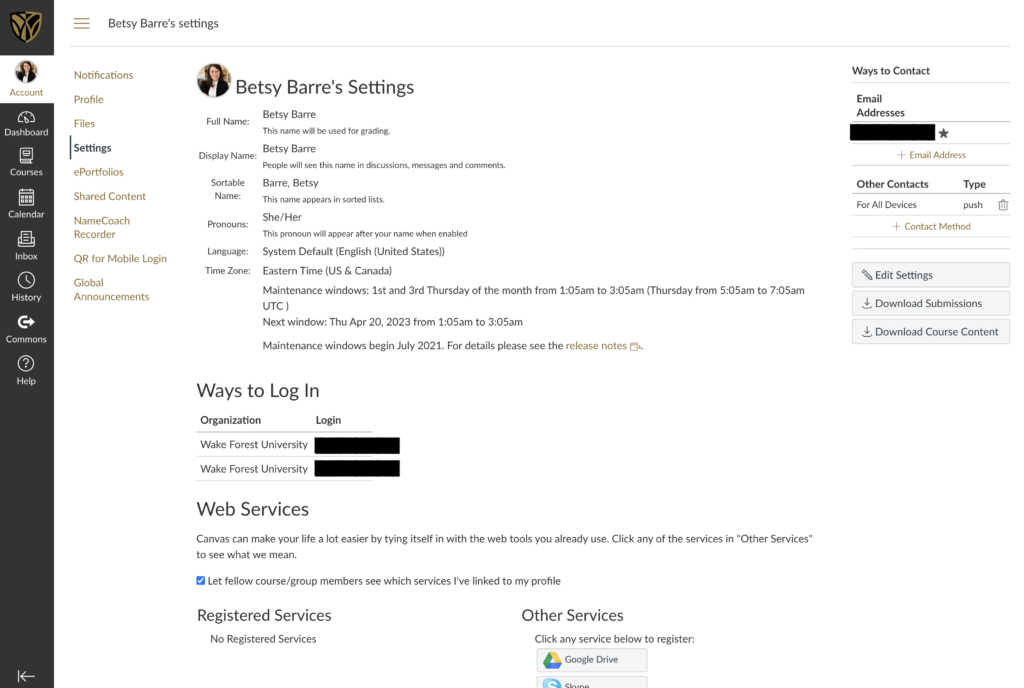
You will be brought to a page that lists current courses with ePub export enabled. Click “Generate ePub” next to the course you would like to export. When the ePub has been generated, you can click “Download ePub” to get the ePub file, and “Download Associated Files” to get any attachments or images that were not included in the ePub file (e.g., attached PDFs of syllabi, course texts, or assignments).
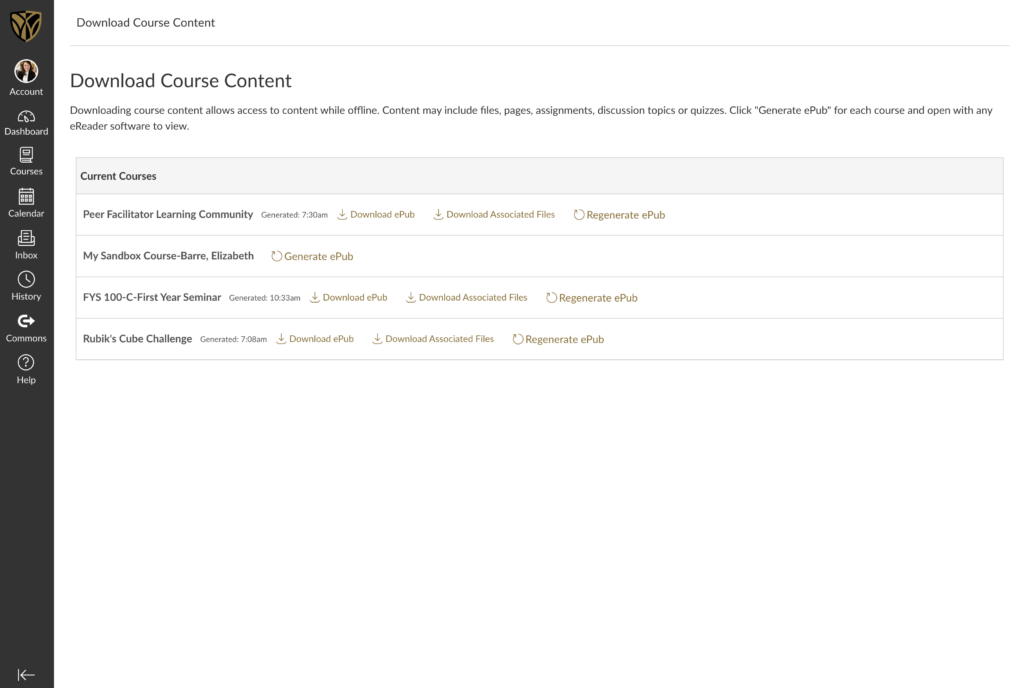
Step 3: Read the ePub
If you have a Mac, you can open the file automatically (in Apple Books). If you have a PC, you may have to download additional ePub reading software. You can use Adobe Digital Editions or, if you’re hoping to convert your ePub, you can use Calibre.
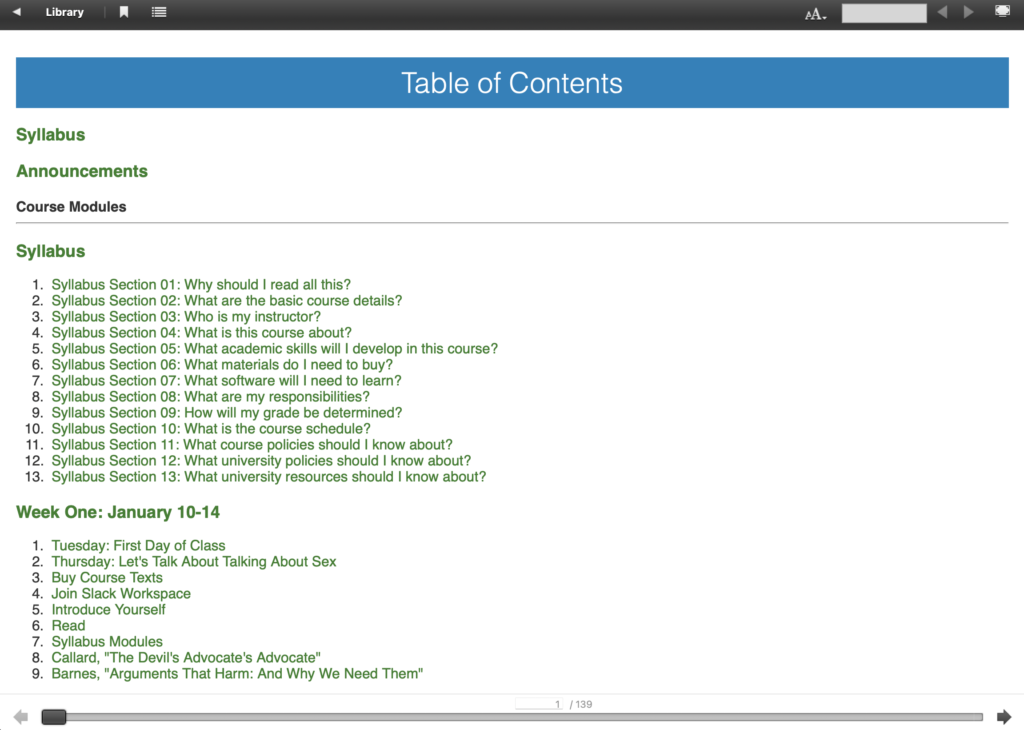
(Optional) Step 4: Convert for Editing
Download and open the open-source e-reader software, Calibre. Click the green “Add books” button in the upper left and navigate to attach your ePub file.
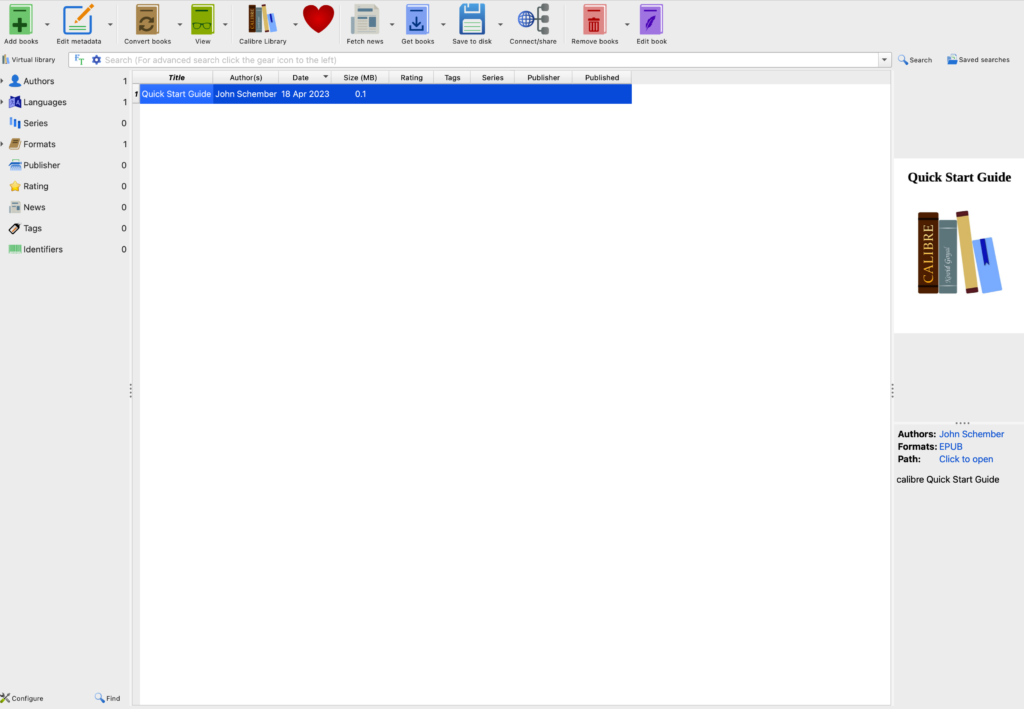
Verify your ePub appears on the list. Click the gold “Convert books” button in the top menu.
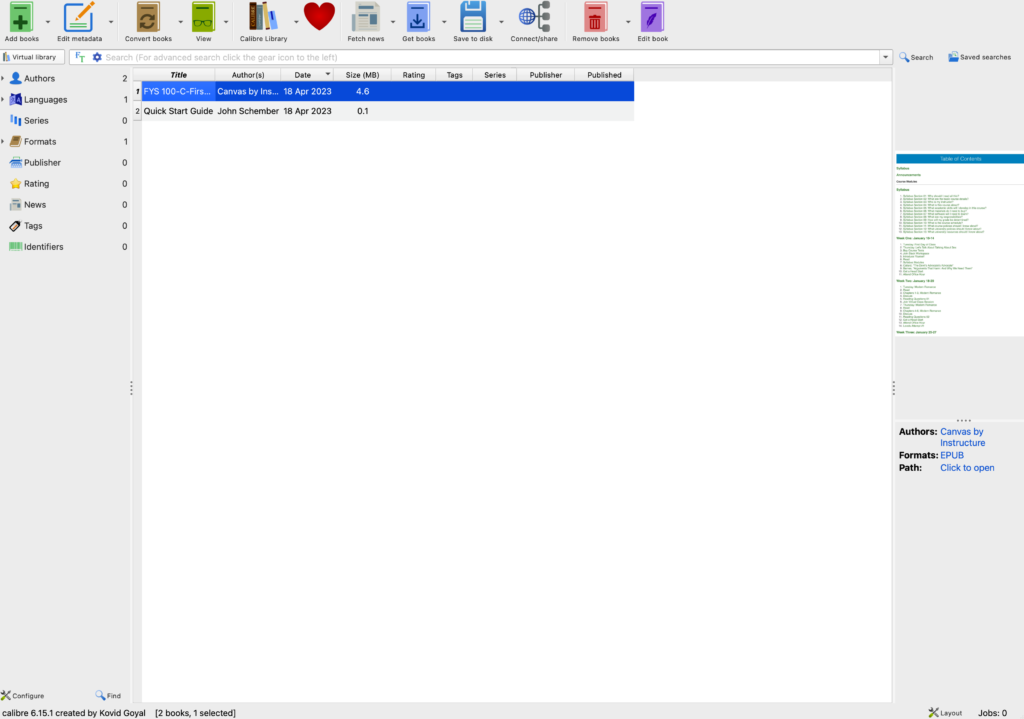
Change the “Output format” in the upper right-hand corner to the format you would like (PDF, Word, HTML, etc.) and click the “OK” button on the bottom right.
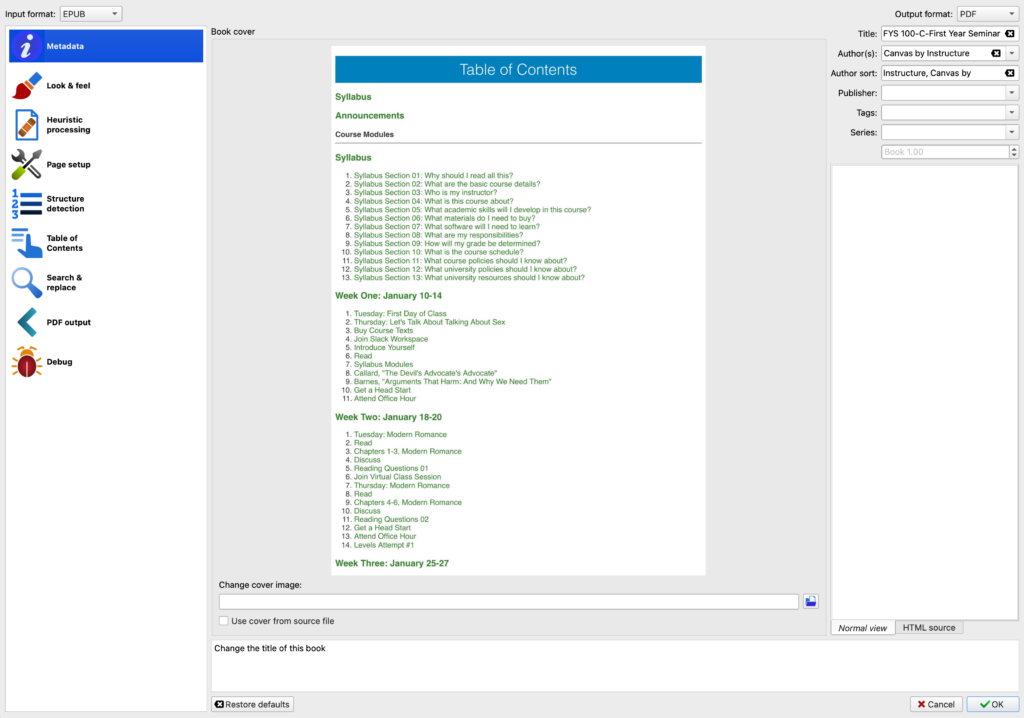
If you don’t know where your file is saved, follow the “click to open” link next to “path” in the right-hand column.
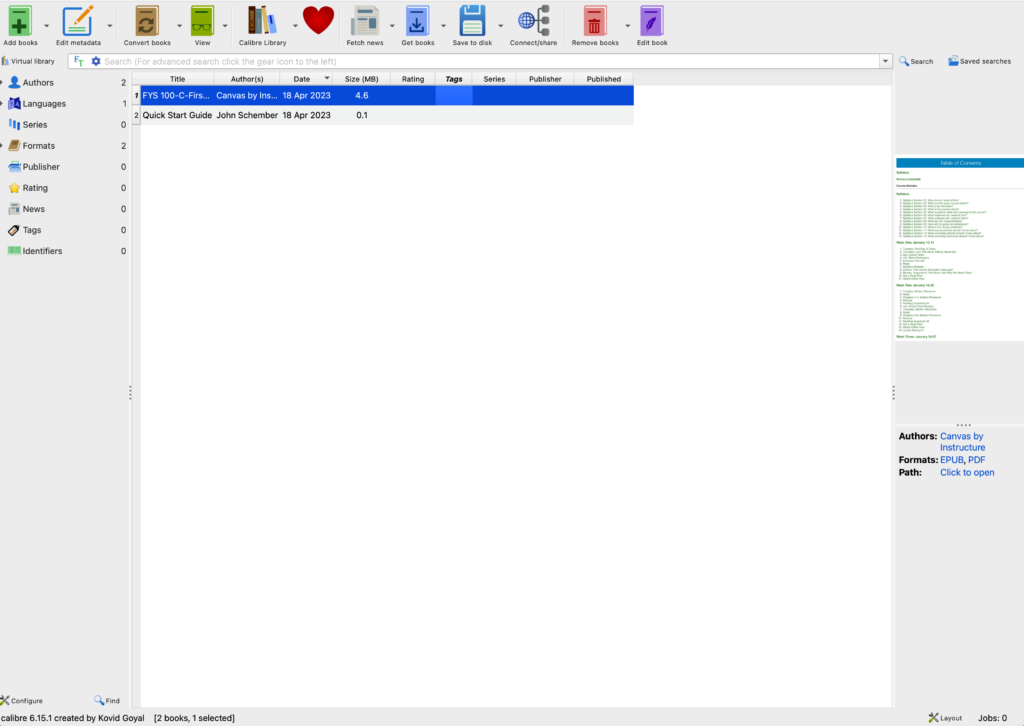
Edit and extract pages with your preferred program!
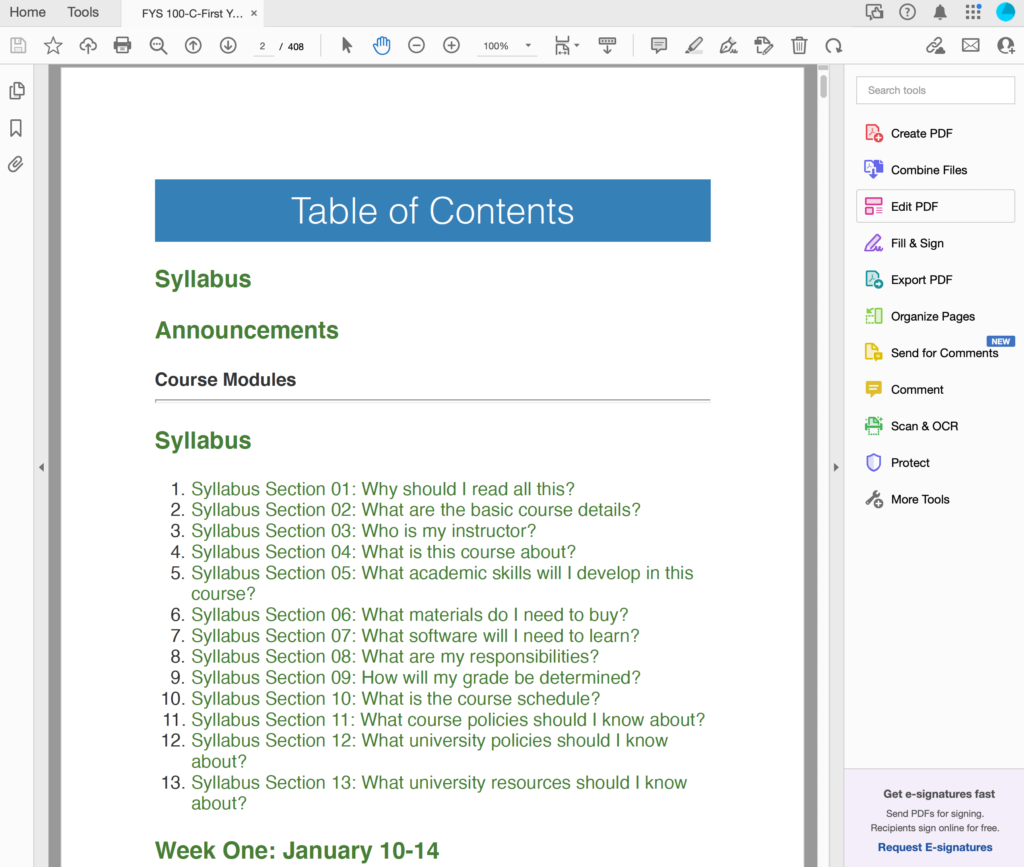
Update: Thanks to Kyle Denlinger for discovering that you can choose how you want the epub you export to be organized. The default is to organize it by modules, but you can also organize it by content type (e.g., all assignments together, all quizzes together, etc.). You can learn more about how to do so here.
Subscribe
Receive CAT blog posts in your inbox.
